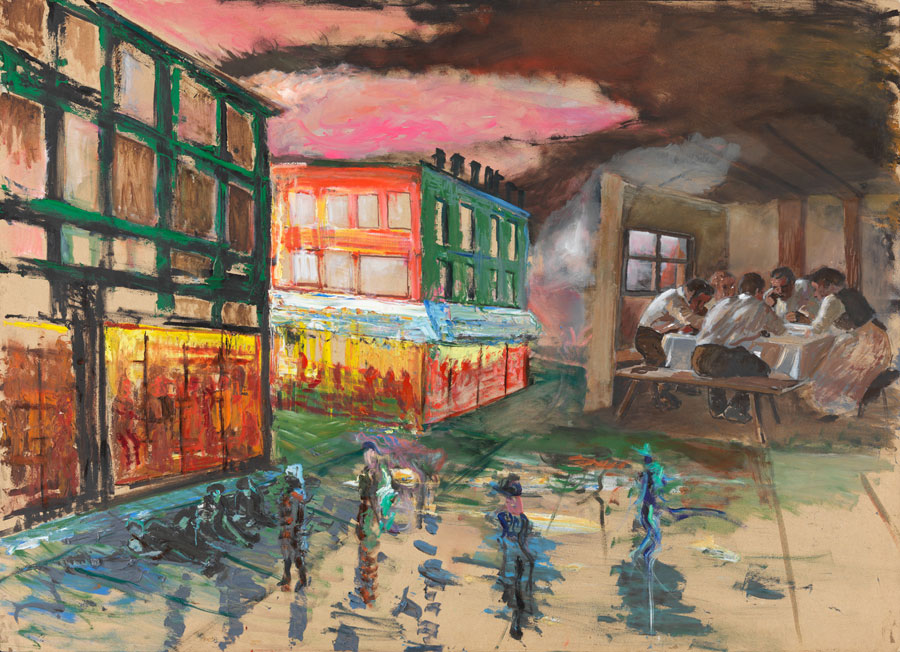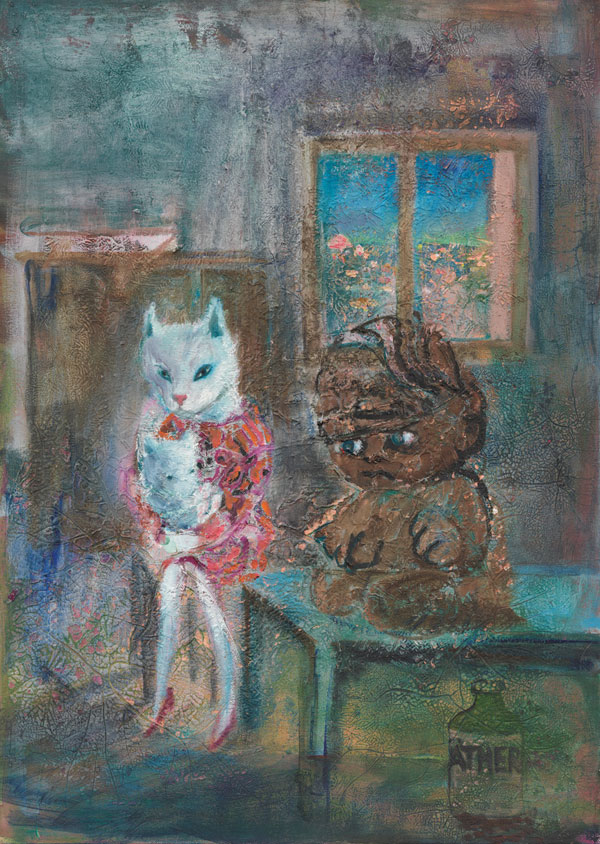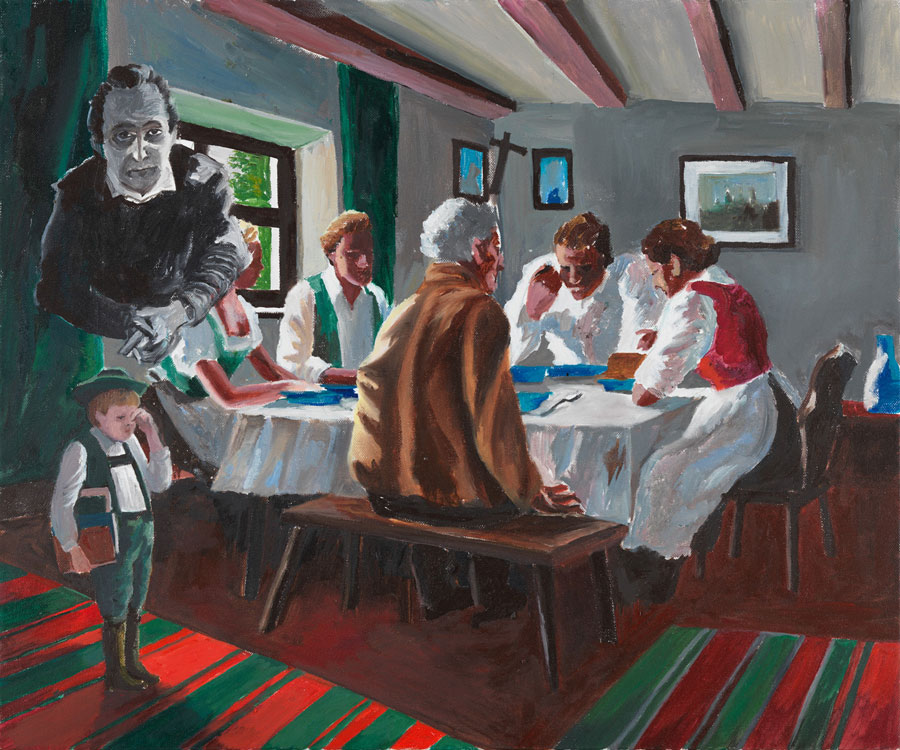Amelie von Wulffen
Galerie Barbara Weiss, Berlin, Germany
Galerie Barbara Weiss, Berlin, Germany

Widespread industrial use of pesticides has now rendered the cockchafer, or May bug, nearly extinct. But more than a century ago in Germany, this beetle was a stock character in popular songs and stories, such as Wilhelm Busch’s classic Max and Moritz (1865), in which the eponymous child pranksters put cockchafers in their uncle’s bed. Beloved by children, this pest was the bane of farmers and foresters: well into the first half of the 20th century, in towns and villages in Germany, schoolchildren and public employees would be freed from their duties and sent into the countryside to collect and destroy the beetles by hand.

The cockchafer made a small comeback in Amelie von Wulffen’s recent exhibition at Barbara Weiss. In the middle of the gallery floor, the artist placed a mock cockchafer larva (all works Untitled, 2016): a hugely enlarged ceramic specimen with a wonderfully milky, slimy-looking glaze, both beautiful and slightly revolting. Presented on a plinth-like piece of furniture designed in collaboration with Lucio Auri, this earth-dwelling caterpillar lent the show a certain gravitas, while setting a surreal tone that resonated with the 15 new works on view.

Von Wulffen’s paintings jarringly collapse present and past, urban and rural culture, the imaginary world of children and the reality of adults, private story with political history. The show’s title ‘Der Tote im Sumpf’ (The Dead in the Swamp) is characteristically anachronistic – reminiscent of a cheap horror novel or a Victorian penny dreadful. The exhibition featured heterogeneous painting styles, ranging from impressionism to expressionism, from 19th-century naturalism to gestural informel – at times synthesized within a single picture. But Von Wulffen’s references go beyond formal and stylistic surfaces, justifying their eclecticism in the works’ content and concepts.

The show’s deft employment of kitsch is exemplified in the recurring figure of the cat, which appears in certain canvases: as a ghostly outline, as a fabulous creature who anthropomorphically wears a dress and high-heeled shoes, in the midst of a fiery inferno, or else in its usual domestic form. In one picture, a bizarre gathering of cats and an owl takes place in a gloomy farmyard kitchen around a table heaped with gold coins and indistinguishable scraps. In their ghostly appearance, the monstrous beasts recall the famous etching The Sleep of Reason Produces Monsters from Goya’s ‘Los Caprichos’ (1789–90) series. Von Wulffen has referred to the Spanish artist in previous works, including her comic book Am kühlen Tisch (At the Cool Table, 2014), in which Francisco Goya fantastically serves as a spirit guide for Von Wulffen. But, in this exhibition, the artist refers to another figure from art history, Gustave Caillebotte, by resurrecting Luncheon (1876), his oil painting of a smart bourgeois interior, in a darkly trashy cover version. This forms a counterpoint to her appropriation of rustic domestic scenes à la Franz Defregger, a 19th-century Tyrolian genre painter who specialized in traditional rural settings, and who was later appropriated by the Nazis as a model for the ‘true German spirit’ in art.

In one of Von Wulffen’s pastiches of Defregger, a small boy in traditional Bavarian dress stands crying, while above him, like a Benjaminian angel, hovers the poet Paul Celan, writer of ‘Death Fugue’ (1948). In another, philosophers Martin Heidegger and Martin Buber engage in relaxed conversation over coffee. This meeting, which actually took place in 1957, was controversial at the time because Heidegger, a Nazi sympathizer, was generally shunned in postwar Germany. Those present around the table – as we learn here – included Von Wulffen’s grandfather. For more than 50 years, the historic photograph had been buried in the Martin Buber archive at the National Library of Israel in Jerusalem. Here, the artist brings to the surface the original picture, which, like many other German family histories, has long been supressed.
Translated by Nicholas Grindell
Main image: Amelie von Wulffen, ohne Titel, 2016, oil on canvas, 70 x 100 cm. Courtesy: the artist and Galerie Barbara Weiss, Berlin























